I recently found some poached lotus root at our local Japanese grocery store. I love lotus root, having ordered it (pickled) in salads for years – a very common preparation at Vietnamese restaurants. I will certainly have a vegan version of that salad on this website in the near future. However, I wanted to use up the rest of the poached lotus root in a warm preparation. I thought it would taste pretty good baked, and the following incredibly easy preparation didn’t disappoint. I just threw a few seasonings on it (ginger, salt, pepper), garnishes (green onion and sesame seeds) and used a tiny bit of tahini to bake the pieces and it was an excellent side dish for lunch.


Baked sesame ginger lotus root
Ingredients
Instructions
- Preheat oven or toaster oven to 390 degrees.
- Mix ginger and tahini together in a small bowl.
- Either toss the lotus in the mixture, or spread onto each piece using a brush. I prefer brushing it on to use a minimal amount of oil.
- Lay pieces on a parchment paper lined baking sheet, and bake for 10 minutes.
- Flip lotus pieces, and bake for another 10-12 minutes until very slightly browned.
- Transfer to plate, and season with salt and pepper.
- Garnish with green onion, sesame seeds and a squeeze of lime.
Notes
Why use lotus root?
Lotus root is a beautiful root vegetable that is a nutritious addition to your diet. It does not have a strong flavor of its own but has a great crunchy texture, so this it makes a great base for adding your favorite dressings and seasonings. Lotus must be cooked before you eat it, and there are a variety of different and common preparations from baking to poaching to pickling.
Lotus root is the rhizome of the lotus plant, an aquatic flower you may be familiar with. There are many possible health benefits associated with lotus root, including aiding with blood circulation and blood pressure in addition to digestion. It contains numerous vitamins and minerals, a significant source of fiber and has a moderate amount of protein. See this page for more information on the nutritional properties and composition of lotus root.
Lotus root is commonly used in salads, but is also prepared fried, baked, and put into stews, stir fry, and soups. We sometimes enjoy it in our spicy noodle soup.
Can’t find it for this recipe? This recipe will work fine with other root vegetables. Find more information and a picture of the raw plant over on Wikipedia.

Find lotus root
Lotus root is an inexpensive ingredient. You can find lotus root at the grocery store, however you will be more likely to find it at an asian grocery store or Japanese market. You can find it fresh or packaged. It’s best to be aware that some canned lotus root is bleached before it’s packaged, so if you can find raw or fresh packaged with minimal processing, that is preferable.
Fresh, raw root: Check in the root vegetable area of the produce section. Here’s a picture of what you are looking for on Wikipedia.
Fresh packaged lotus root: Often in the produce section or refrigerated aisle, you will find the lotus root often packaged along with liquid (water). A fresh poached package of lotus root is what I used for the recipe above. If you can’t find poached lotus root, you can use the directions below to make your own.
Lotus root is also available frozen and dried, canned, or bottled.
[amzn]
Poaching your own lotus root
Peel the lotus root with a vegetable peeler, and slice into pieces that are about 1/4 of an inch wide or less.
Bring salted water with about a 1/2 tsp of vinegar to a slow boil. Add lotus root slices and simmer for about 5 minutes. Let the vinegar water cool, and store the lotus root in the liquid in the fridge.

[sub]
- Pad Thai Protein Salad recipe from The Plant-Based Cookbook + Book Review and Giveaway! - December 9, 2020
- Lemon ginger bowl sauce with miso recipe (Oil free, no added sodium) - November 30, 2020
- New vegan bacon at Whole Foods Market – 300 store roll-out - November 15, 2020

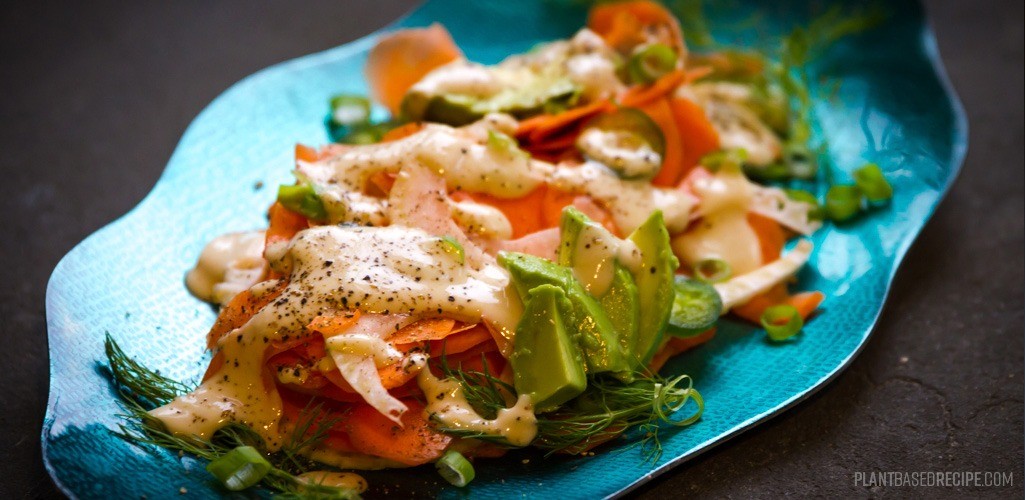
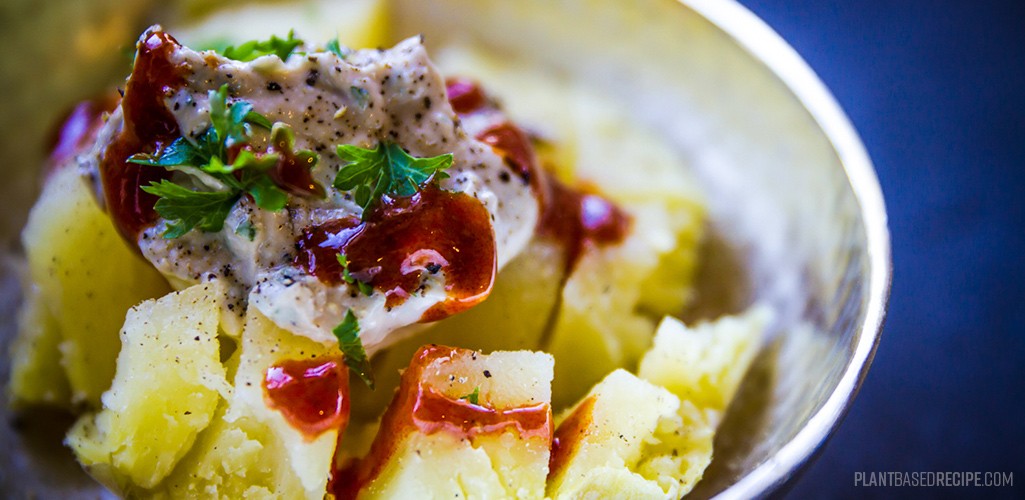





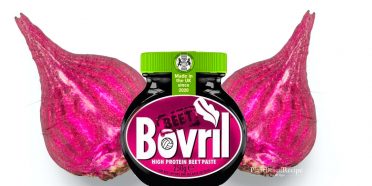


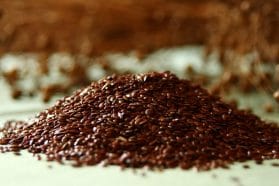
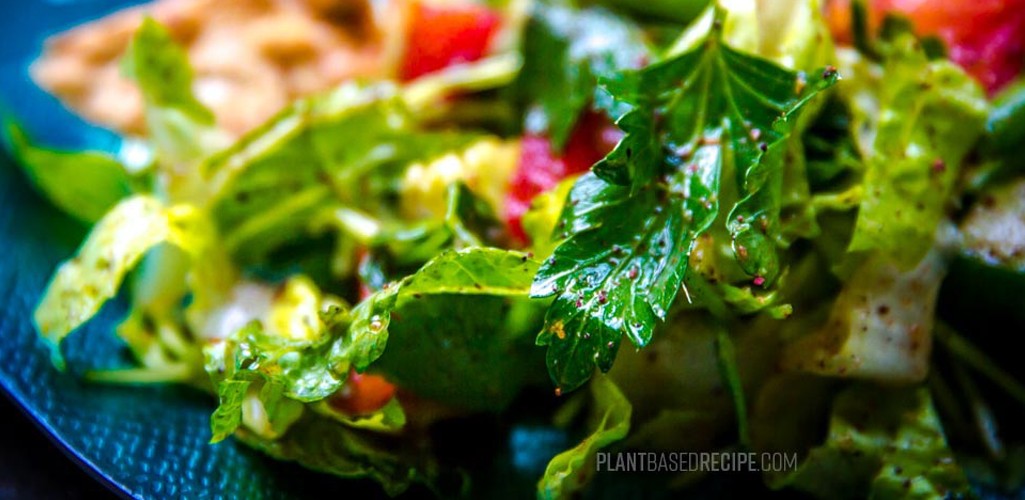


Jamie
This was delicious! I added in a little toasted sesame oil and soy sauce to the initial coating of ginger and tahini. I also used sliced frozen lotus root instead. I made a dipping sauce of soy sauce and a few dashes of yuzu kocho hot sauce.
Jen @ Plant Based Recipe
I’m so happy that you liked it! That dipping sauce sounds perfect 🙂
Angie
The instructions say to mix the ginger and sesame oil together but there’s no sesame oil in the ingredients. Tahini is listed in the ingredients and noted in the Notes section but it’s not included in the instructions. I used the ginger and sesame oil mix and it tasted great!
Jen @ Plant Based Recipe
Thanks Angie! Yes I updated the recipe when I went oil free to use sesame paste instead of the oil, but missed that bit. Thanks for noting the instruction bug! I also now add a bit of sesame flavor extract too. But yes if you use oil, it adds a great flavor 🙂
JM
Delicious!